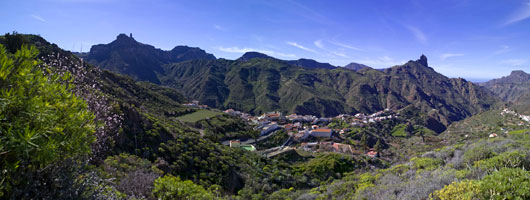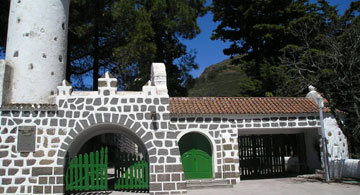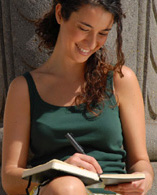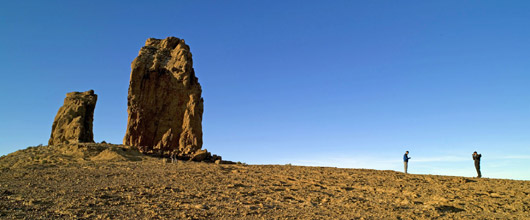Our next stop is to the municipality of Tejeda, in the mountainous central region of Gran Canaria. Tejeda is 44 kilometres from the capital of the island and 22 kilometres from San Mateo. It is situated at 1,050 metres above sea-level, registering the maximum altitude of the island at 1,949 metres above sea-level in the Pico de los Pozos de las Nieves. In its mountain peak region it has a “mirador” (viewing area) with unique views of the Caldera de Tirajana (the Crater of Tirajana) and the Nublo Rural Park. The cycle climb to the Pico de las Nieves is notorious thanks to international competitions which ascend its eastern side, being considered one of the hardest peaks in Spain.

The natural surroundings of this area are characterised by the large woods of Canarian pine, which at present also share space with a large colony of almond trees. Culture and art are also present in this municipality. Thus, once in the village of Tejeda the visitor can visit the Abraham Cárdenes Sculpture Museum, where one can admire the work of this famous Canarian sculptor. Additionally, a stop at the Etnographic Museum and the Medicinal Plant Centre in the Village of Tejeda, are worth a mention. Public opening times: Tuesdays to Sundays from 11:00 to 14:15 and from 15:00 to 17:00 hours.
The visit to the municipality cannot overlook either the Parish Church of Nuestra Señora del Socorro, a temple dating from the year 1921, situated in the village, nor the National Parador of Tejeda, located at the Cruz de Tejada. A large stone cross presides the entrance to the Parador, and a few meters away from this cross there are numerous stalls which sell typical products of the area and where, among other things, one can savour the typical hand-made pastry of the municipality, elaborated with almonds, as well as enjoy the magnificent views of the Roque Nublo. Moreover, for those that love trekking some of the best mission trials cross at the Cruz of Tejeda.


One of the landmarks of Gran Canaria is also found in Tejeda: the Roque Nublo, an enormous basalt stone in the form of a greater than 70 metres high monolith, surging as a consequence of past volcanic activity and erosion. Next to it we find another monolithic rock called El Fraile (The Friar), due to its resemblance with a praying monk or friar.
However, Tejeda also treasures a large part of the rich archaeological heritage of the island. Here we can find pre-hispanic vestiges, such as burial caves, carvings, paintings and old aboriginal houses.

The “mirador” of the Degollada de Becerra also constitutes a place of special interest. Located between La Cruz de Tejeda and the Pico de las Nieves, it is a natural viewing area. Tejeda also has El Roque, one of the most singular rock formations on the island and one with great archaeological and natural value. It is found in the volcanic crater of Tejeda in the heart of Gran Canaria.
The municipality also has recreational areas which stand out due to their scenery. Los Llanos del Pez and la Presa de las Niñas have the necessary infrastructures which favour the use and enjoyment of nature.
For greater tourist information on the municipality, a visit to the Tourist Office located in the village is recommended.